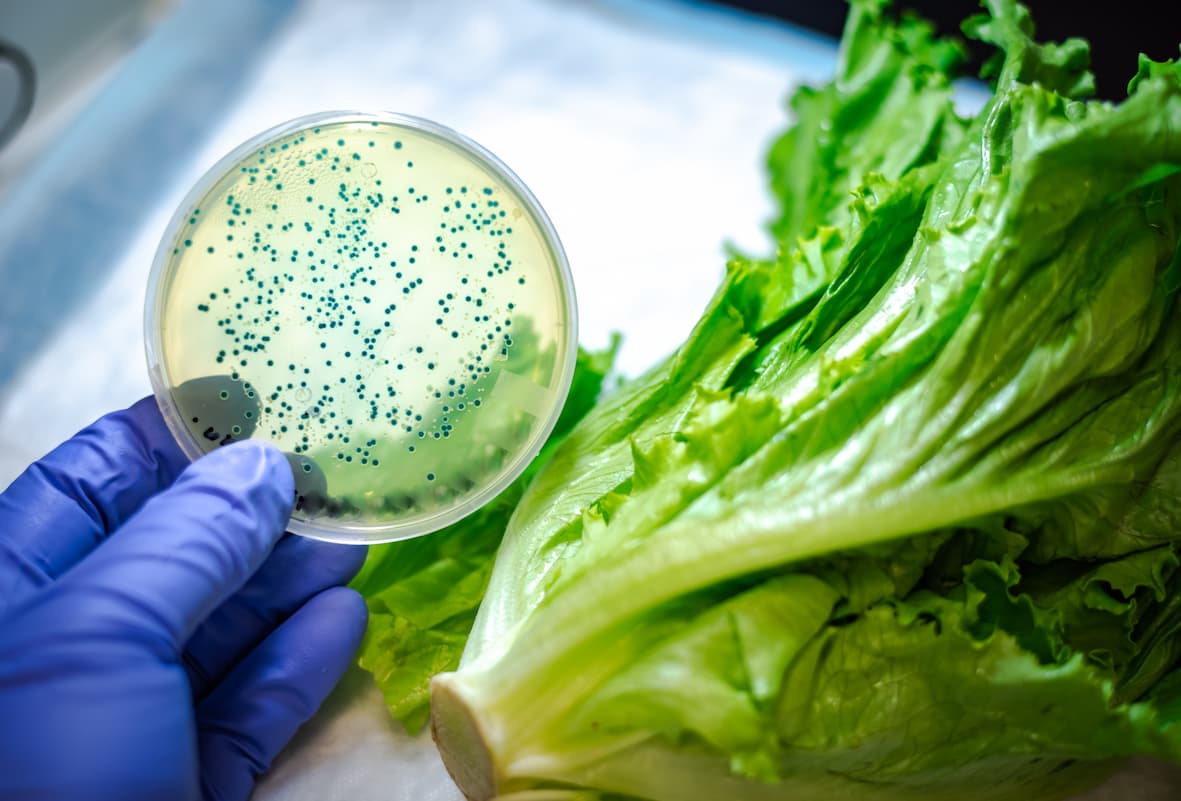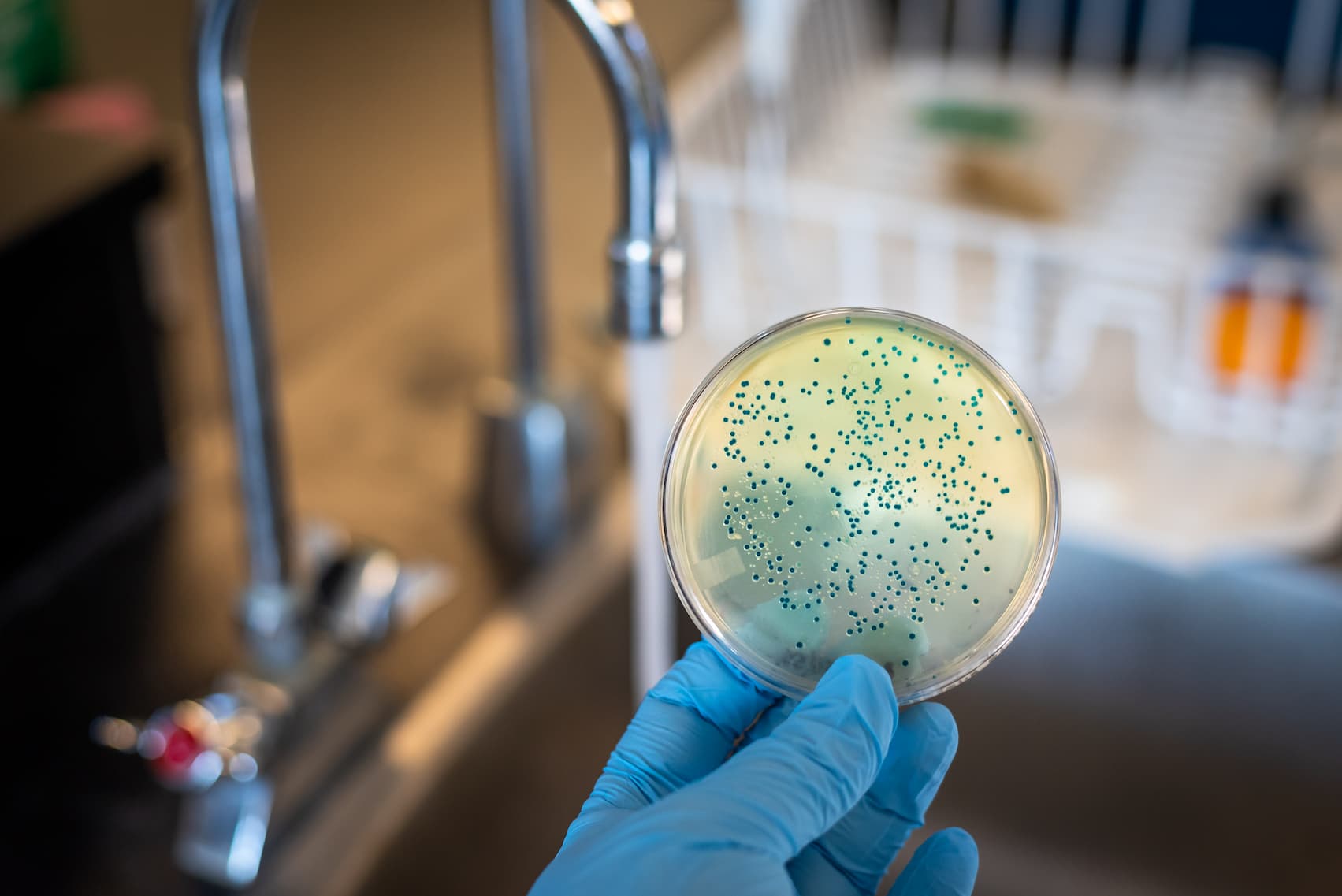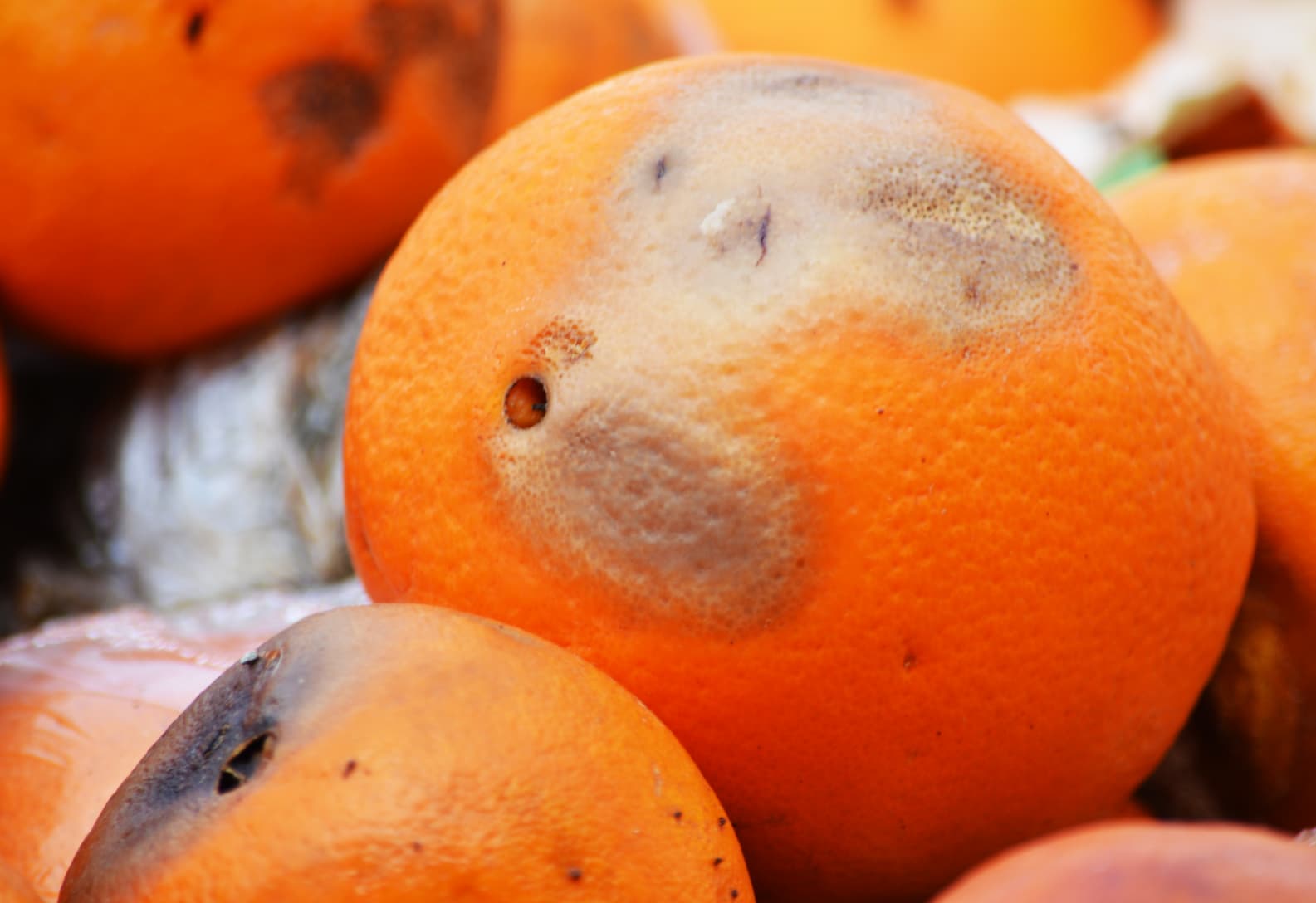Why Is Food Safety Important In Healthcare? Healthcare Leaders Guide
Learn challenges healthcare foodservice teams face today and key food safety practices to protect vulnerable patients. Get a free healthcare leader...
Food pathogens cause the majority of foodborne illnesses recorded worldwide every year.
Food industries are in constant battle with food pathogens. A huge portion of the food safety management effort is focused on controlling foodborne pathogens and protecting consumers from the risks they carry.
Pathogens can negatively affect humans and spoil foods. Outbreaks are commonly attributed to foodborne pathogens, which originate and spread through the lack of proper food controls.
Different food types and operations may attract particular food pathogens. Some may be more prone to contamination due to the nature of their operations, whereas others can employ minimal food safety standards. Regardless of how prone a food business is to contamination, food control over the prevalence of pathogens in a food business is important.
The World Health Organization estimated that at least 600 million people get sick from foodborne illnesses after consuming contaminated foods. These foodborne illness estimates arise from the lack of food control and safe food and water resources in the industry.
Read through this article as we discuss the most important topics about food pathogens and discover the perfect solution to managing food control intuitively.
WHAT WE'LL COVER:
Food pathogens are biological contaminants of food that cause foodborne illnesses in consumers. In general, pathogens are microorganisms that can produce negative or detrimental effects on their host.
Foodborne pathogens can be bacteria, molds, viruses, or yeasts that can cause human diseases or produce harmful toxins in foods. They are responsible for causing the majority of the foodborne illness outbreaks recorded in history.
Researchers and the Centers for Disease Control and Prevention have identified more than 250 foodborne diseases caused by food pathogens.
The negative effects caused by food pathogens can result from the changes they produce in the food, otherwise known as food spoilage, the toxins they emit, or the pathogen's activity inside the human body. Pathogens use the nutrients and moisture from food matrices as a source of energy and produce by-products, which we perceive as spoilage.
The effects of each food pathogen on consumers significantly vary on the causative agent, the microbial load of food, and the consumer's immune system. Effects can range from simple diarrhea and abdominal cramp to life-threatening cases.
In food businesses, foodborne pathogens and diseases are considered major hazards for any operation. Critical operations are established to control and minimize their presence to protect consumers.
Pathogens can grow on different kinds of food. Like human beings, they need the nutrients and moisture from common food ingredients to survive and nourish themselves. Some food pathogens can be more resistant than others, allowing them to grow in harsher conditions which may be inhabitable for most.
Pathogens tend to contaminate foods abundant with the following key elements to survive:
The presence of these factors can shorten or lengthen the incubation period of food pathogens. For example, foods with more moisture can spoil faster than dried foods.
High-risk foods or those categorized as Time/Temperature Control for Safety (TCS) foods are more likely to be contaminated by pathogens as their characteristics support the growth of pathogens. Foods such as raw meat products, poultry, leafy greens, fresh fruits, cooked pasta, milk products, and eggs are all high-risk foods. Partnered with optimum environmental growing conditions, pathogens will contaminate these food materials and spoil them fast.
Contrary to high-risk foods, other food types are less likely to be contaminated. Some products have extreme characteristics and more complex food matrices that do not support the growth of pathogens. For example, acidic foods such as jams and jellies are less likely to be contaminated and spoiled by pathogenic bacteria. These products' very saturated and acidic characteristics will inhibit the growth of most disease-causing bacteria.
In addition, dried products that have less than 15% moisture are more shelf-stable. Almost all pathogens require very high moisture content and water activity to support growth.

Microorganisms are a natural part of the environment. They thrive in areas where there is an abundance of nutrients and moisture, such as foods. Although some microorganisms are naturally present in raw materials used in food businesses, pathogens are different news.
Not all microorganisms can cause foodborne diseases. Some of them are beneficial and can produce desired changes in food. What makes pathogens unwanted is their effects on humans. Pathogens can enter the food system through the air, soil, water, and food handlers.
Some of the most common foodborne pathogens known in the food industry include the following:
| Foodborne pathogen | Commonly associated food | |
| Bacteria |
Escherichia coli (E.coli) |
Drinking water systems, meat products, sprouts |
| Staphylococcus aureus (S. aureus) | Poultry and cooked meat | |
| Salmonella Typhimurium (S. Typhimurium) | Poultry, meat, vegetables, sprouts | |
| Vibrio spp. (e.g., Vibrio vulnificus, V. parahaemolyticus) | Contaminated water, raw oysters | |
| Campylobacter jejuni (C. jejuni) | Raw and undercooked meat and poultry | |
| Mycobacterium tuberculosis (M. tuberculosis) | Raw milk | |
| Molds and yeasts | Fusarium spp. | Cereals and grains |
| Aspergillus spp. | Cereals, grains, peanuts, raw milk | |
| Rhizopus stolonifer | Bread | |
| Pichia spp. | Feeds | |
| Viruses | ||
| Norovirus | Shellfish, fresh fruits, leafy greens | |
| Hepatitis A | Water system, vegetables, fruits | |
In addition to this non-exhaustive list of foodborne pathogens, six major pathogens have been identified by the Food and Drug Administration. These foodborne pathogens are noted to cause the majority of foodborne illness outbreaks over the past years.
The six most notable foodborne illness-causing pathogens in the food industry include:
These six food pathogens have been documented to cause some of the most widespread cases of foodborne illnesses. They are known to be highly infectious and can cause significant adverse effects even with a small microbial load.
Food pathogenic contamination is a common problem in any food business. It can lead to significant problems, such as causing a foodborne illness outbreak when uncontrolled. The most notable cause of pathogenic contamination is cross-contamination, or the movement when pathogens transfer from one place to another.

Cross-contamination can occur through different routes in the food chain and must be consistently controlled. Controlling pathogenic contamination starts by understanding how it can happen in the food facility. Below are some of the common routes of pathogenic contamination in the food business:
The presence of food pathogens in a food business is inevitable as foods and food handlers themselves inherently carry the microorganisms. Despite this, with proper control, monitoring, and sanitation, their presence can become negligible and safe.
Pathogenic contamination can result in different situations and at any point within the food chain that may be damaging for both the consumers and your food business. The lack of critical control operations can put the lives of your customers in danger and create a bad reputation for your company's brand.
For food businesses, pathogenic contamination can lead to the following consequences:
When more than one customer experiences negative effects from consuming your foods, the situation can be declared as an outbreak. Symptoms of food poisoning can manifest differently among customers. Healthy adult customers may show lesser symptoms from bacterial infections, whereas individuals with weaker immune systems, such as pregnant women and the elderly, can suffer more significantly.

The presence of foodborne pathogens in food can be an indicator of the lack of food controls in a kitchen operation.Pathogenic contamination is a significant contributor to the economic problem of a nation. The World Bank has estimated that the effects of food contamination cost low- and middle-income countries an estimated value of $95.2 billion per year. These costs rise from the medical attention given to the affected consumers and the loss of productivity as a result of illnesses.
The best way to control food pathogen contamination in an establishment is to have a comprehensive food safety management system. With the rise of technology applications in the food chain industry, management systems are becoming more and more intuitive. Software solutions present the perfect combination of technology and food safety management. Experience the efficiency and assurance that Food Safety Management Software offers.
Every food business must have a team adequately trained in controlling pathogenic contamination. This will ensure that food handlers know how to address food safety issues and improve accountability among themselves. While food pathogens are inherently present in any food business, their control and limitation are not impossible with proper food handling.
Follow these food safety guidelines to prevent food from being contaminated with pathogens:
In the food industry, preventing food pathogens from contaminating products is more economical and effective rather than addressing them as they cause infectious diseases. This approach to food safety reduces the resources and efforts needed to contain the damage of foodborne pathogens. Consistent and appropriate monitoring operations can help your team ensure control over foodborne pathogens.
Using gloves can help lower the risk of food contamination, but they are effective only if worn and replaced correctly. Food handlers should change their gloves at least every four hours, after breaks, and when changing tasks. However, relying solely on gloves is not enough to prevent the spread of pathogens. Food workers must also practice regular handwashing.
Detection and identification of pathogens in food may not always be the easiest task. The naked eye cannot see bacterial pathogens unless thousands of bacterial cells form a colony and produce visible groups. Groups of pathogenic bacteria and yeast cells often present themselves as circular growths in varying colors. On the other hand, molds can be seen as colonies with fuzzy, cotton-like appearances. Detecting these formations is a sure sign that the food item is already contaminated.
In some cases, food pathogens will not form colonies but still produce unwanted changes in the food. Some signs of pathogen contamination include the following:
These markers are signs that the food is significantly contaminated and is not fit for consumption anymore. A common example of spoilage from contamination is when pathogens in milk form curdle on its surface and produce an acidic scent.
Remember that not all cases of foodborne pathogen contamination will manifest these changes. Some toxin-producing pathogens can excrete toxin by-products on the food and not produce any unwanted changes.
In such cases, more advanced methods for detection of pathogens are used. Foodborne pathogen detection is used only through quantitative detection methods. This type of operation puts the product on hold in manufacturing companies and can cause delays during incubation periods until it clears of contamination.
Recently, rapid detection methods are now being used to determine the average prevalence of pathogen in food. Some manufacturing companies benefit from simultaneous detection as it speeds up the process of decision-making if the product is safe for release in the market in terms of pathogen level.
With the different and complex operations that need to be consistently performed repeatedly, food handlers may have a hard time keeping up with other tasks. The magnitude of controlling pathogens in a food business can also be taxing for a food safety manager.
To address this problem more intuitively and efficiently, use FoodDocs digital Food Safety Management System.This digital solution's features can help you stay on top of food safety compliance and keep your customers safe.

In addition to features that will help your team monitor food safety controls for pathogens, our digital solution can also help managers boost management efficiencies.
Powered by artificial intelligence and a machine-learning program, our digital Food Safety Management System can help you manage food safety tasks with less effort. There is no need to have extensive knowledge in setting up a digital system or managing food safety, as our digital solution can intuitively do it for you.
All generated monitoring logs and checklists are tailored to the nature of your operations. Further, customize logs and checklists to improve their suitability to your food business. In an average of 15 minutes, you can switch to a completely digital platform system that is more sustainable than using the traditional paper-based monitoring system.
Experience all of these mentioned features and more by using our free 14-day trial now.
Do you have more questions about food pathogens? Here, we answer some of the most frequently asked questions about this topic.
Foods high in nutrients and moisture are more likely to be contaminated by pathogens as they support their growth. Pathogens require the same nutrients needed by humans, which can be found in food sources.
The best way for food workers to keep food safe from pathogens is to practice proper hygiene. The majority of foodborne illness outbreaks recorded in the past are attributed to poor hygiene and cross-contamination in the food chain.
Raw foods such as unpasteurized milk products, meat, poultry, vegetables, and fresh fruits are more likely sources of foodborne pathogens than cooked or processed foods, such as dried fish or processed meats.
Food handlers can detect pathogens on food when the contaminating food pathogen produces visible colonies on the food matrices or when they produce observable changes in the food. Other methods of detection involve the use of rapid methods, such as an assay for detection procedure. Rapid and sensitive detection procedures can yield faster results for decision-making and more accurate prevention of bacterial infections.
Learn challenges healthcare foodservice teams face today and key food safety practices to protect vulnerable patients. Get a free healthcare leader...
Learn what Standard Operating Procedures (SOPs) are and how to write effective SOPs that ensure consistency, efficiency, and safety in your...
Boost your retail food safety with essential practices and digital tools to protect customers and your brand. Plus a free Retail Food Safety Leader...